By Rodaportal
INTRODUCTION
The United States is presently witnessing a surge in migration, marked by a notable increase in individuals embarking on arduous journeys to reach the southern border. However, this surge transcends mere local challenges, evolving into a complex regional issue with far-reaching implications. To grasp the complexities of this phenomenon, it is imperative to delve into the multifaceted push and pull factors that drive individuals and families toward the United States.
Recent events, including President Joe Biden’s decision to authorize the construction of a 20-mile border wall stretch in Rio Grande Valley, underscore the evolving nature of the situation. This unexpected policy shift, akin to a sudden handbrake turn, raises inquiries about the underlying dynamics shaping government decisions. The border wall, originally conceptualized by former President Donald Trump, faced staunch opposition from Biden’s Democratic party, criticizing it as divisive and racist. The apparent reversal in Biden’s stance prompts an investigation into the factors influencing this decision and its consequences.
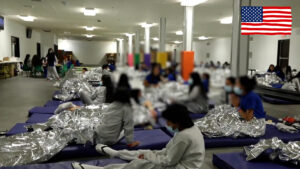
Moreover, the surge in migration poses substantial challenges to U.S. border security and immigration systems. The strain on processing centers, asylum courts, and detention facilities is evident, leading to delays and backlogs. Humanitarian concerns linked to the surge, especially for vulnerable populations like children and families, underscore the urgent need for comprehensive and considerate solutions.
As we navigate the intricacies of the migration crisis, it becomes apparent that understanding the root causes is pivotal. A combination of economic instability, fleeing violence, political turmoil, climate-induced displacement, and perceived shifts in immigration policies acts as a collective force propelling the current migration surge.

While acknowledging the challenges faced by migrants, it is crucial to stress that adopting the role of economic migrants may not be the ultimate solution. Encouraging unity and advocating for a better future in their home countries can have a more meaningful impact than becoming a burden to another nation.
Amid this surge, the U.S. government stands at a crossroads, balancing the delicate interplay between border security and humanitarian considerations. Policymakers must navigate the fine line between immediate crisis response and addressing the root causes of migration to formulate effective immigration policies.
Through this exploration, we aim to dissect the ongoing migration crisis, scrutinizing its various facets and shedding light on the urgent need for comprehensive and collaborative solutions. By comprehending the intricacies of the situation, we contribute to the discourse surrounding this intricate regional challenge.

Drivers Behind the Surge in Migration:
Economic Instability:
The surge in migration to the United States is intricately connected to a multitude of factors, with economic instability taking centre stage. This is particularly evident among individuals from Central American nations, where poverty and limited employment opportunities drive them toward the US.
For many, the pursuit of economic opportunities is not just about upward mobility; it is a lifeline, a quest for a better life for themselves and their families. In Central America, where socio-economic challenges are deeply rooted, individuals grapple with the daily struggle for survival. The promise of economic prosperity in the United States becomes a beacon of hope, compelling them to embark on challenging journeys, often fraught with danger.
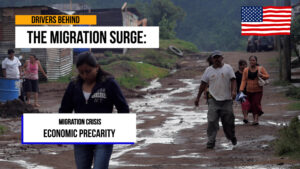
In regions where poverty is widespread, the prospect of securing a stable job, higher wages, and an improved standard of living can be a powerful motivator, prompting people to overcome significant obstacles in the pursuit of a brighter future. The economic hardships fueling this migration surge are not confined to a single location but rather a shared experience among many who perceive the United States as a land of opportunity capable of transforming their lives.
As we navigate the intricate web of motivations propelling this migration surge, it becomes evident that economic instability is not a standalone factor but a complex interplay of circumstances intertwining with other compelling forces. To comprehend the full scope of this surge, we must unravel the layers of these drivers and acknowledge the interconnected nature of socio-economic factors pushing individuals to undertake the demanding journey toward the U.S.
While economic challenges drive many migrants from Central American nations toward the U.S., it’s crucial to emphasize that migration isn’t a comprehensive individual solution. It is imperative to understand that migration cannot be the sole resolution to problems faced by communities.
Migrants must collaborate with their communities to identify and address the root causes of migration. It is equally important to recognise the potential negative impact of migration on host countries, as it may not offer sustainable solutions. Therefore, empowering communities to bring about change within their nations is crucial for creating long-lasting positive transformations.
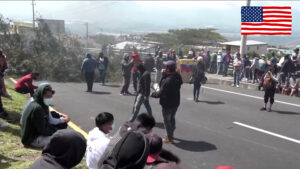
Escape from Violence:
Citizens of countries such as Honduras, El Salvador, and Guatemala are compelled to seek refuge beyond their borders due to the widespread violence and gang activities in their regions.

Political Turmoil:
Political instability, notably in Venezuela, has resulted in a mass exodus of migrants escaping the consequences of economic collapse and political unrest. The pursuit of stability and a brighter future propels them northward.

Climate-Induced Displacement:
Environmental factors, exacerbated by climate change, significantly contribute to the surge. Droughts, hurricanes, and other climate-related events create conditions of food insecurity and economic instability, compelling people to migrate in search of more sustainable livelihoods.
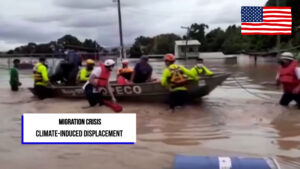
Perceived Policy Changes:
Changing perceptions of United States immigration policies play a role in the surge. The belief that policies have become more accommodating may contribute to an increased willingness to undertake the perilous journey. However, migrants should critically assess the situation, understanding that policies can be dynamic, and relying solely on perceived changes might lead to unforeseen challenges.
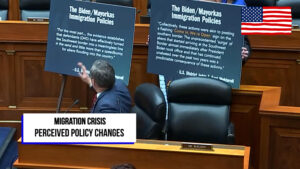
Impact on the United States:
The abrupt surge of migrants presents a formidable challenge to the U.S. immigration system. Processing centres, asylum courts, and detention facilities grapple with an overwhelming volume, resulting in delays and backlogs. This strain underscores the pressing need for reforms in the immigration process to ensure efficiency and fairness.
The surge gives rise to significant humanitarian concerns as migrants, including vulnerable populations like children and families, endure challenging conditions during their journey. Providing adequate shelter and services upon arrival becomes a critical issue. Balancing border security with the compassionate treatment of migrants is crucial to upholding the country’s values and meeting international obligations.
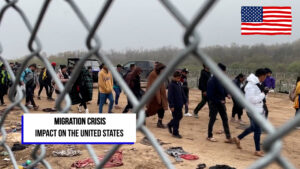
Policymakers are confronted with the intricate task of balancing border security measures with humane and efficient immigration policies. The surge amplifies the need for comprehensive immigration reform and thoughtful policy adjustments. Striking the right balance is essential for addressing immediate challenges and implementing sustainable long-term solutions.
Border communities, particularly smaller towns, grapple with the sudden population increase. This strain affects local resources, healthcare facilities, and educational institutions. The surge becomes a focal point in political discussions, sparking debates on immigration policies, border security, and the necessity for systemic reform.
Calls for executive action and legislative solutions resonate across the political spectrum. Finding common ground becomes imperative for effectively addressing the crisis and implementing policies that benefit the nation and those seeking refuge. The surge underscores the importance of international collaboration. Addressing the root causes of migration requires close collaboration with countries in Central America, tackling issues ranging from economic development to security and governance.
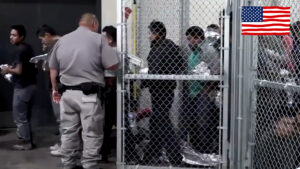
Conclusion
In conclusion, the surge in U.S. migration presents a multifaceted challenge that necessitates nuanced solutions. From economic precarity and escape from violence to climate-induced displacement and policy perceptions, the diverse drivers demand comprehensive attention. Recent policy shifts, such as President Biden’s approval of a border wall, underscore the dynamic nature of this crisis and the intricate decisions faced by policymakers.

The strains on the immigration system, coupled with humanitarian issues, policy dilemmas, and the impact on local communities, highlight the gravity of the situation. For a deeper understanding of these complexities, consider watching my YouTube video titled “Policy Shifts and Border Challenges: United States Migration Crisis” -[https://youtu.be/hspi7ny158I].
Remember, staying informed and engaged is crucial, and your active participation is key in shaping the discourse around this critical issue.
